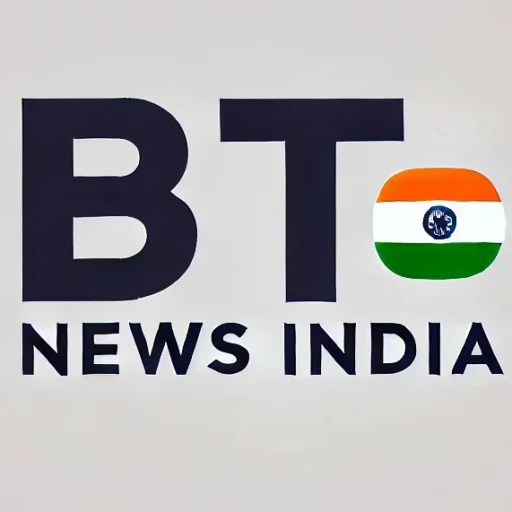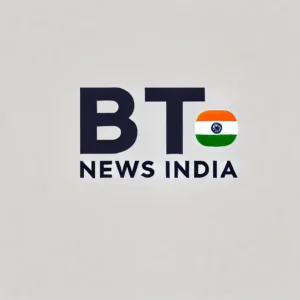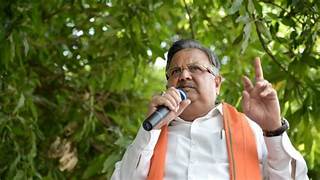Officials deliver 100% resolution across 18 departments, distribute welfare benefits, and hold special ceremonies for women and children in Dongargaon block
Published on: May 14, 2025
By: BTI
Location: Rajnandgaon, India
As part of Sushasan Tihar 2025, a special Samadhan Shivir (public grievance redressal camp) was organized at Khursipar village under the Janpad Panchayat Dongargaon, district Rajnandgaon. The event brought together multiple government departments, public representatives, and local residents to address and resolve civic and welfare concerns of 11 surrounding gram panchayats.
The camp witnessed the participation of villagers from Badgaon Charbhatta, Khujji, Badbhoom, Darri, Ratapayli, Khursipar, Kirgi, Nandiya, Bhatguna, Parna, and Rudgaon. These communities submitted a wide range of applications and grievances, which were promptly addressed during the camp with 100% resolution, as reported by officials.

Departmental Participation and Grievance Redressal
The camp featured active participation from major departments such as Panchayat and Rural Development, Agriculture, Women and Child Development, Revenue, Fisheries, Animal Husbandry, Public Works, Electricity, Public Health Engineering, Health, Transport, Police, Education, Excise, Forest, Labor, Food, and District Cooperative Central Bank. Officials from each department publicly read out the number of applications received and the resolutions completed.
The Chief Executive Officer of Janpad Panchayat Dongargaon led the review from the Rural Development side, announcing that 2,292 applications received from the participating gram panchayats were resolved in full. The officials’ transparency and public reading of resolutions reinforced confidence in government processes among the rural attendees.
Distribution of Welfare Benefits
As part of direct benefit delivery, several welfare schemes were activated during the camp. Notably, under the Prime Minister Awas Yojana (Gramin), eligible beneficiaries were formally handed over their homes in a symbolic “Griha Pravesh” (housewarming) ceremony. Additionally:
Also read-https://www.btnewsindia.com/instant-learners-licenses-delight-villagers-at-sushasan-tihar-camp-in-vicharpur-navagaon/ https://www.btnewsindia.com/ward-level-solution-camps-in-rajnandgaon-from-may-5-to-31-under-sushasan-tihar-2025/
- Four farmers received their land record documents (loan passbooks) from the Revenue Department.
- Four laborers were issued Shramik Cards under the Labor Department’s welfare initiative.
- The Women and Child Development Department organized a “God Bharai” (baby shower) for expecting mothers and conducted “Annaprashan” (first solid feeding ceremony) for infants — fostering social and maternal care awareness in rural communities.
Public Engagement and Information Stalls
Various departments also set up informational stalls, which were visited and appreciated by public representatives and citizens alike. These stalls showcased the range of government schemes available to the public and educated them on how to access benefits. Officers provided on-the-spot guidance and explained the procedure for availing of state and central government initiatives.
Leaders and Officials Attend in Strength
The event was attended by several key public representatives and administrative officials, including:
- Former Zila Panchayat President Shri Dinesh Gandhi
- Janpad Panchayat President Smt. Ranjita Padoti
- Janpad Vice President Shri Manish Sahu
- Zila Panchayat Speaker Smt. Jagruti Chunni Yadu
- Zila Panchayat Member Smt. Vibha Sahu
- Janpad Members Smt. Genda Bai Sahu, Shri Vivek Mandavi, Shri Times Sahu
- Local sarpanches, upsarpanches, and panchs
- SDM, Tehsildar, and officers of Janpad Panchayat Dongargaon
The strong participation of both administration and local leadership signaled a unified push toward responsive governance and inclusive development under the Sushasan Tihar framework.
A Model for Decentralized Governance
By focusing on decentralization and timely grievance redressal, the Samadhan Shivir at Khursipar exemplified good governance in action, blending welfare delivery, community participation, and government accountability — a model that could be replicated across rural India.




